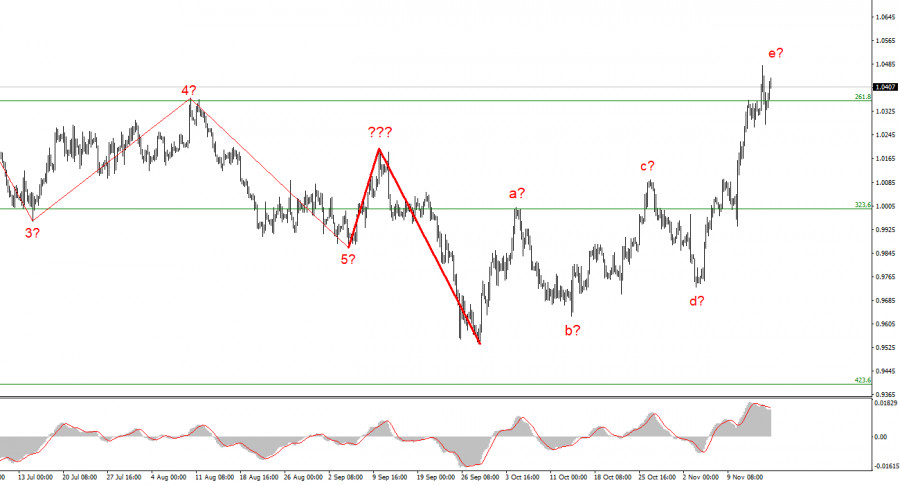
The market has hit a pause button to evaluate the current state of affairs and the information background. I believe that the market has already responded to all the reports and events that were released and took place recently. In my opinion, a strong rise in instruments on the back of a decline in the US dollar was not entirely expected. In particular, both the euro and the pound rallied much more than I expected and expected by market participants. And what could be the basis for such an increase in demand for the euro and the pound and a fall in the dollar? All the same events of the end of last week, when several members of the FOMC announced their readiness to discuss softening the pace of monetary tightening in December. The report on US inflation also dampened demand for the US dollar, which dropped significantly in October and aroused such discussions among FOMC members. There was no other reason...
Now, we need to understand one very important point. Since the wave layout of both EUR/USD and GBP/USD implies the completion of the upward trend section, it means that the demand for the US currency should begin to grow. What can help this? We look at the economic calendar and see that there is practically nothing interesting this week. Yesterday, the report on inflation in the European Union was released, but it was only a revised report for October. The market knew that inflation rose to 10.6% in October, and it was not in its rules to respond to the same report twice. ECB President Christine Lagarde will make another speech today, but given her speech on Wednesday, which contained nothing important, we can assume that today her rhetoric will be quite plain and formal. This means that there will be no events that could affect market sentiment this week.
EUR/USD

Based on this, I think that the market may start to increase demand for the US currency for no reason. This also happens, albeit quite rarely. Nevertheless, wave e has taken a much longer shape for the euro than the four previous waves, so a correctional wave should follow anyway, in my opinion. This week there will be not only that news background that could trigger sell-offs of the greenback but also that which could cause buying. And next week will be about the same. No important speeches, no important reports (on the labor market or inflation), no meetings of central banks. I think now is a good time to build down waves for both instruments.
Based on the analysis, I conclude that the construction of the uptrend segment of EUR/USD has become more complicated to five-wave and continues due to the inflation report and unflattering statements by FOMC members. However, I cannot advise buying now, since the wave layout does not suggest a further increase. I would advise traders to sell EUR/USD in case of a successful attempt to break through 1.0359 with targets located near 0.9994, which corresponds to 323.6% Fibonacci.